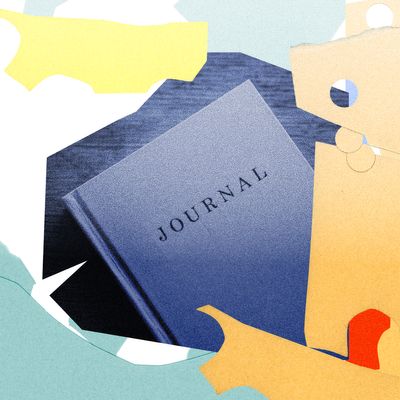
“I Tried It” is a micro-series in which Cut writers test popular mindfulness practices to see if they improve their mental health and even, perhaps, their whole life.
For the past few years, an empty notebook has accompanied me everywhere. It has haunted my nightstand, wasted space in suitcases, and even hung out in a few totes, untouched next to a well-worn novel. The notebook is supposed to be my journal — except I never write in it. Jotting down my daily thoughts was one of those things I imagined an enlightened, more together version of myself would do, kind of like learning to roast a chicken or having an herb garden. But no matter how available the notebook was to me, I could never bring myself to sit down and write in it. The mere idea of recording my weirdest, dumbest, most embarrassing inner thoughts in ink makes me cringe.
Eventually, I realized I needed some more structure if I ever wanted to put pen to paper. Like the barely reformed teacher’s pet I am, I started looking into journaling techniques that felt like assignments. Ideally, I wanted a style that would prescribe everything: when to write, where to write, what to write, and which pen to use. And I wanted it to feel a little like homework — to dread it a little when I first sat down but feel accomplished and satisfied at the end.
I’d heard of The Artist’s Way, a book originally published in 1992 and conceived as a self-help manual for anyone who felt creatively blocked. It has all kinds of glamorous and arty adherents, among them Alicia Keys and Kerry Washington. Its inventor, Julia Cameron, lays out a series of exercises designed to get the creative juices flowing—which was appealing to me because it reads a lot like a workbook: Write an encouraging letter to yourself. Go to an art gallery. Repot a plant.
Its most popular exercise, which I chose to follow for my journaling experiment, is “Morning Pages,” which has you writing three pages, stream-of-consciousness style, every day when you wake up. Cameron recommends doing it as early as possible, “before our ego is awake,” and she mandates single-sided, letter-size paper. It all sounded structured enough to force my hand.
When I started, I didn’t wake up looking forward to sacrificing 15 extra minutes of sleep to write down my silly little thoughts. What’s more, I didn’t feel like dissecting my feelings or doing any kind of emotional work first thing in the morning — I wanted to down a cup of coffee and get on with my day.
But this is where the structure of Morning Pages comes in. I had to do it. Still, they’re infuriatingly unhelpful when it comes to telling you what to write. For the first few mornings, I mostly recorded life updates interspersed with the occasional meta-commentary on not knowing what else to write. Eventually, I reached out to Amanda Stemen, a mindfulness-oriented therapist in Los Angeles who says she does Morning Pages every day, for some guidelines on how to move beyond the “life updates” stage of journaling. She suggested writing down in detail any physical sensations I experience while journaling and to be more accepting and attentive to any thoughts or feelings that might come up. This worked.
I started turning to physical sensations whenever I ran out of thoughts, which would often lead me to another, deeper topic to write about. By page two, I was usually scribbling away. After a few mornings, I started feeling energized by the time I was done writing. I was more ready to start my day than I’d ever been when I wake up and head straight to the couch.
It still feels mortifying to know the unfiltered contents of my brain are now splayed out on paper somewhere. But I do feel more focused and purposeful than I have in a while, and I think Morning Pages has something to do with it. Maybe one day I’ll branch out and let myself journal without a regimen. “There is no right or wrong way to journal,” Stemen reminded me. “Write whatever you want, wherever you want, whenever you want.” I don’t know if I’ll ever get to a place where I don’t have to be pushed to record my feelings, but who knows — maybe one day all my notebooks will be filled.


